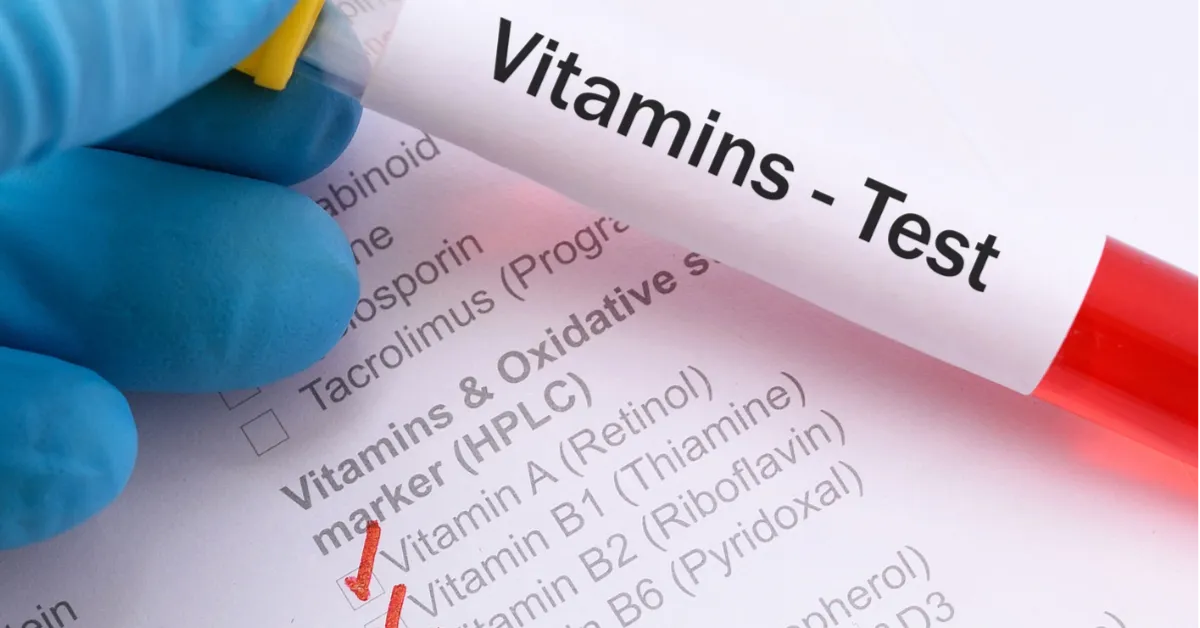USP Vitamin B6 Testing in Infant Nutrition Products
The United States Pharmacopeia (USP) 1 USP Vitamin B6 Testing in Infant Nutrition Products is a critical procedure for ensuring the quality and safety of infant nutrition products. This test method, designed to detect and quantify vitamin B6 (pyridoxine) in these products, plays a pivotal role in upholding consumer trust and regulatory compliance.
In infant nutrition, vitamins are essential nutrients that support growth and development during infancy. Vitamin B6 is particularly important for the metabolism of proteins and carbohydrates, red blood cell formation, and brain function 2. Ensuring accurate and reliable vitamin B6 content in infant formulas and other nutrition products is paramount to preventing deficiencies or overconsumption of this vital nutrient.
The USP test method employs advanced analytical techniques, such as High-Performance Liquid Chromatography (HPLC), to achieve precise quantification. This method involves several steps: extraction of vitamin B6 from the product sample, cleanup through solid-phase extraction, and final analysis by HPLC with fluorescence detection.
The importance of this test cannot be overstated. Accurate measurement ensures that infant nutrition products meet the recommended daily allowances (RDA) for vitamin B6 as specified in international standards such as USP 3 and FAO/WHO guidelines. Inadequate levels can lead to deficiencies, while excessive amounts may cause toxicity.
The process begins with careful selection of the product sample, followed by thorough extraction using solvents like methanol or acetonitrile. The extracted solution is then purified using solid-phase extraction (SPE) cartridges to remove interfering components before analysis. This meticulous preparation ensures that only pure vitamin B6 enters the HPLC system for quantification.
High-Performance Liquid Chromatography with Fluorescence Detection (HPLC-FD) is the preferred method due to its high sensitivity and specificity. The instrument separates the various compounds present in the extract, allowing for accurate identification and quantitation of vitamin B6 based on its unique fluorescence properties upon excitation at a specific wavelength.
The results from this testing process are reported with great precision, often down to parts per million (ppm). This level of accuracy is crucial given the small amounts of vitamin B6 required by infants. The report typically includes details such as the concentration of vitamin B6 found in each sample, comparison against specified limits or RDA values, and any potential deviations from expected results.
This testing method has far-reaching implications for infant nutrition product manufacturers, quality control personnel, regulatory bodies, and consumers alike. By adhering to USP , companies can demonstrate their commitment to producing safe, effective, and high-quality products that meet strict international standards.
In conclusion, the USP Vitamin B6 Testing in Infant Nutrition Products is a cornerstone of infant nutrition safety. It ensures consistent quality across batches while safeguarding public health by preventing both vitamin deficiencies and potential toxicities. This rigorous testing process underscores our dedication to excellence in laboratory services tailored specifically for this sector.
Customer Impact and Satisfaction
The successful implementation of USP Vitamin B6 Testing significantly impacts customers across various sectors, including infant formula manufacturers, regulatory bodies, and healthcare providers. For manufacturers, adherence to this standard provides tangible benefits:
- Quality Assurance: Accurate vitamin content ensures that products consistently meet required specifications.
- Regulatory Compliance: By meeting USP guidelines, companies avoid penalties and enhance their reputation for reliability.
- Consumer Trust: Transparent reporting builds confidence among parents who trust these products to be safe and effective.
For regulatory bodies, the consistent application of this test method contributes to safer markets by identifying non-compliant products early. Healthcare providers also benefit from this rigorous testing process as they can recommend more reliable infant nutrition products with greater peace of mind.
The ultimate goal is to foster customer satisfaction through superior product quality and reliability. Our services are designed not only to meet but exceed expectations, ensuring that customers receive the highest standard of laboratory testing available today.
International Acceptance and Recognition
The USP Vitamin B6 Testing in Infant Nutrition Products enjoys widespread international acceptance due to its stringent standards and broad applicability. This method is recognized globally for its reliability and accuracy, making it an essential tool for ensuring the safety of infant nutrition products.
In many countries, including those within the European Union (EU) and other regions that follow international guidelines like ISO 17025 4, this testing protocol is mandatory. Compliance with such standards enhances product acceptance in foreign markets, ensuring broader distribution opportunities for manufacturers.
The recognition of USP extends beyond regulatory requirements; it also serves as a benchmark for excellence within the industry. Laboratories accredited according to ISO 17025 or equivalent are well-positioned to perform this testing accurately and consistently. This accreditation not only underscores expertise but also builds trust among stakeholders.
The harmonization of standards like USP with international norms fosters a more unified approach towards ensuring product safety across borders. As a result, consumers worldwide can benefit from products that meet stringent quality criteria without facing geographical restrictions.
Competitive Advantage and Market Impact
The implementation of USP Vitamin B6 Testing provides significant competitive advantages for infant nutrition product manufacturers. In today's highly competitive market, maintaining a robust quality assurance program is crucial for standing out among competitors.
Consistent Quality: By adhering to this stringent testing protocol, companies can ensure consistent vitamin content across all batches of their products. This consistency translates into better performance and reliability, which are key factors in gaining customer loyalty.
Enhanced Reputation: Meeting international standards such as USP enhances a company's reputation for quality and reliability. A strong brand image is essential in building trust with consumers who value transparency and safety above all else.
Better Market Access: The global recognition of USP Testing opens up new market opportunities by ensuring product acceptance across borders. This increased access can drive sales growth and expand market share.
In conclusion, the implementation of this rigorous testing protocol not only strengthens a company's position within its current markets but also paves the way for future expansion into untapped territories. By prioritizing quality through USP Testing, manufacturers can secure their place at the forefront of infant nutrition product innovation.





